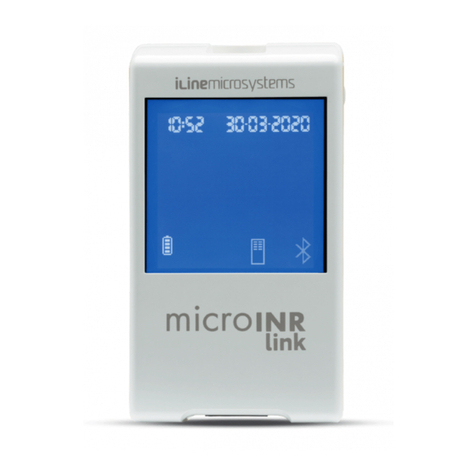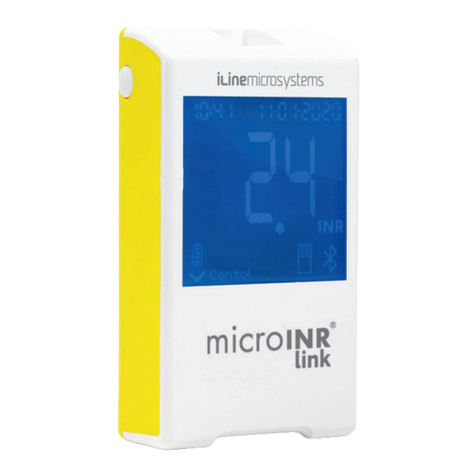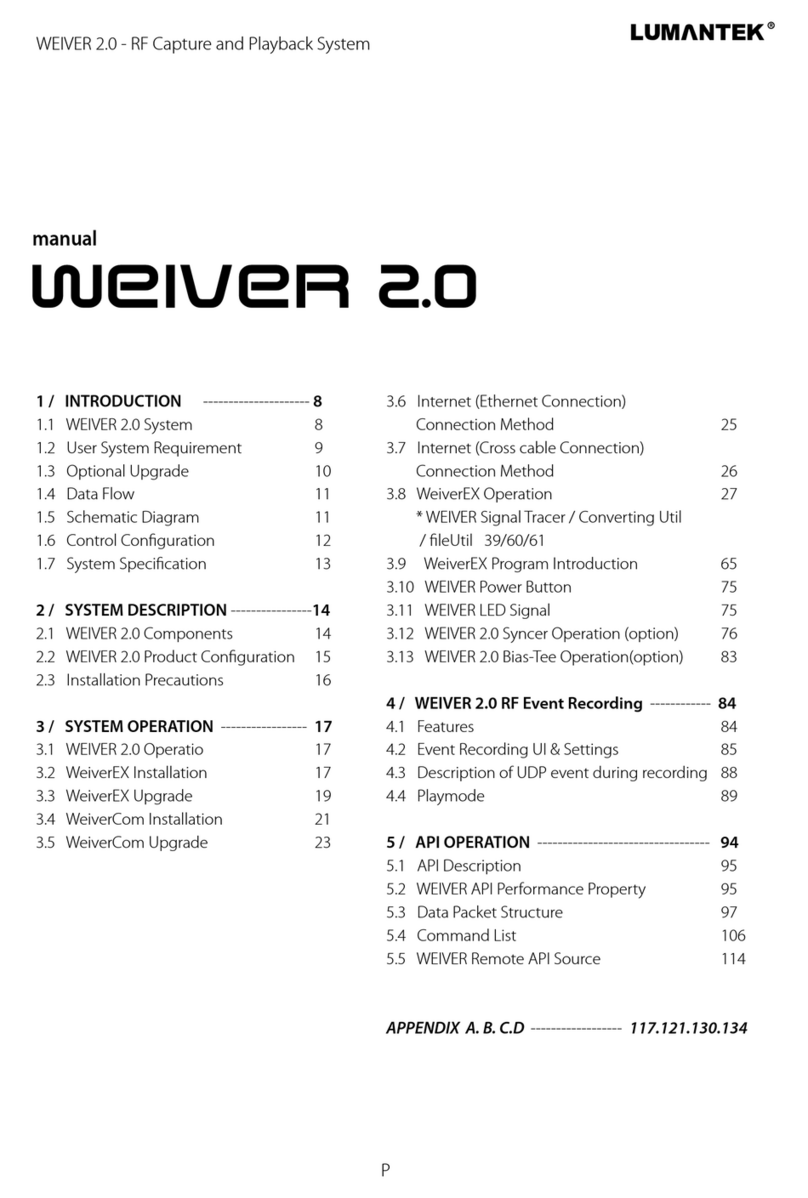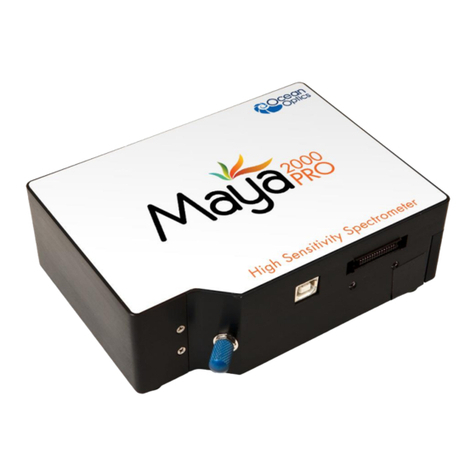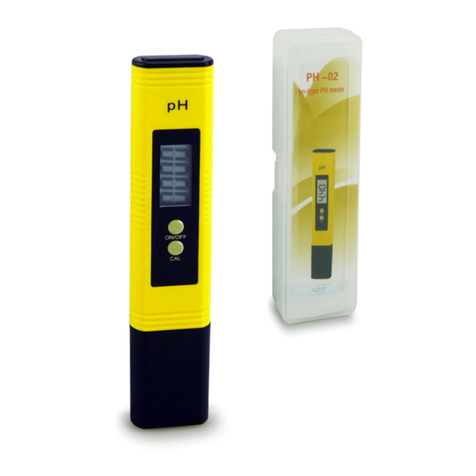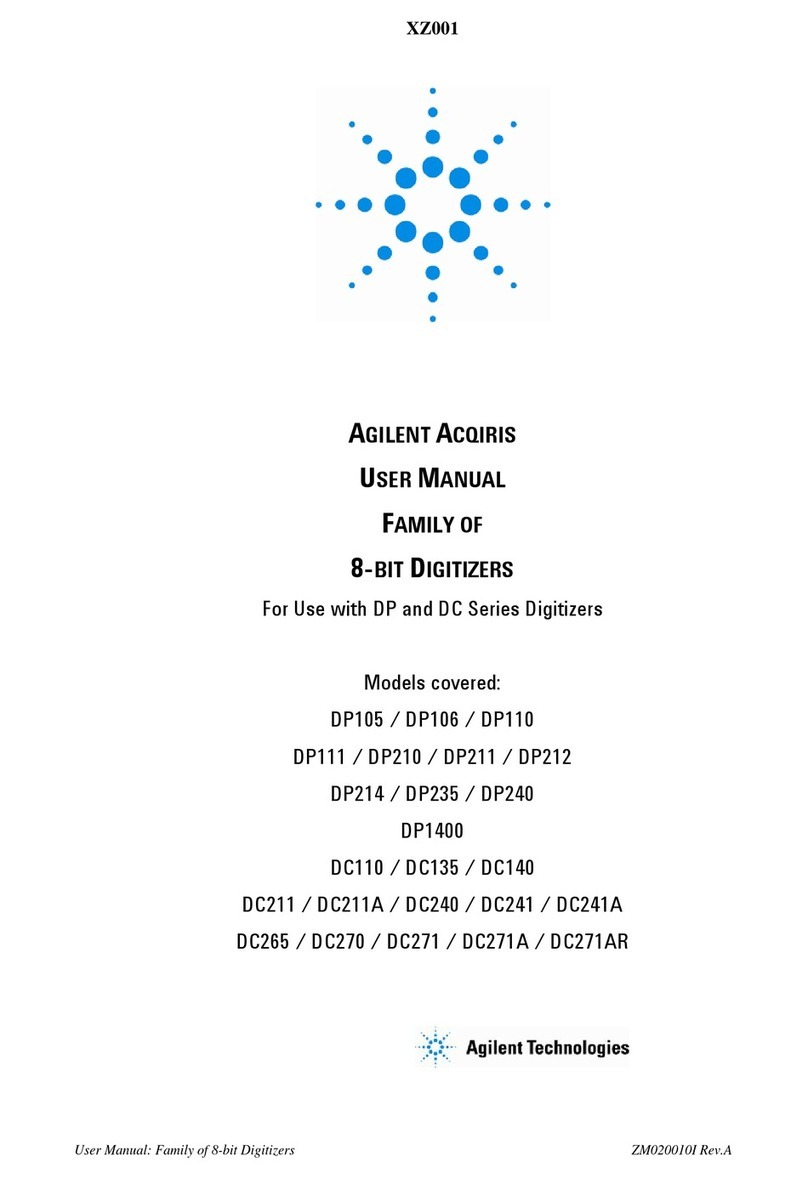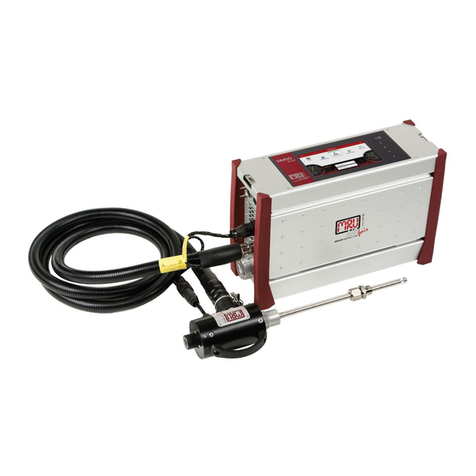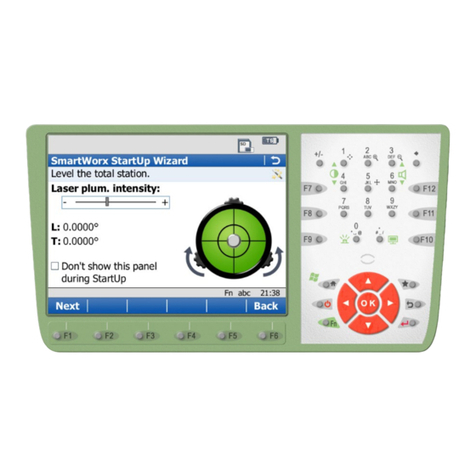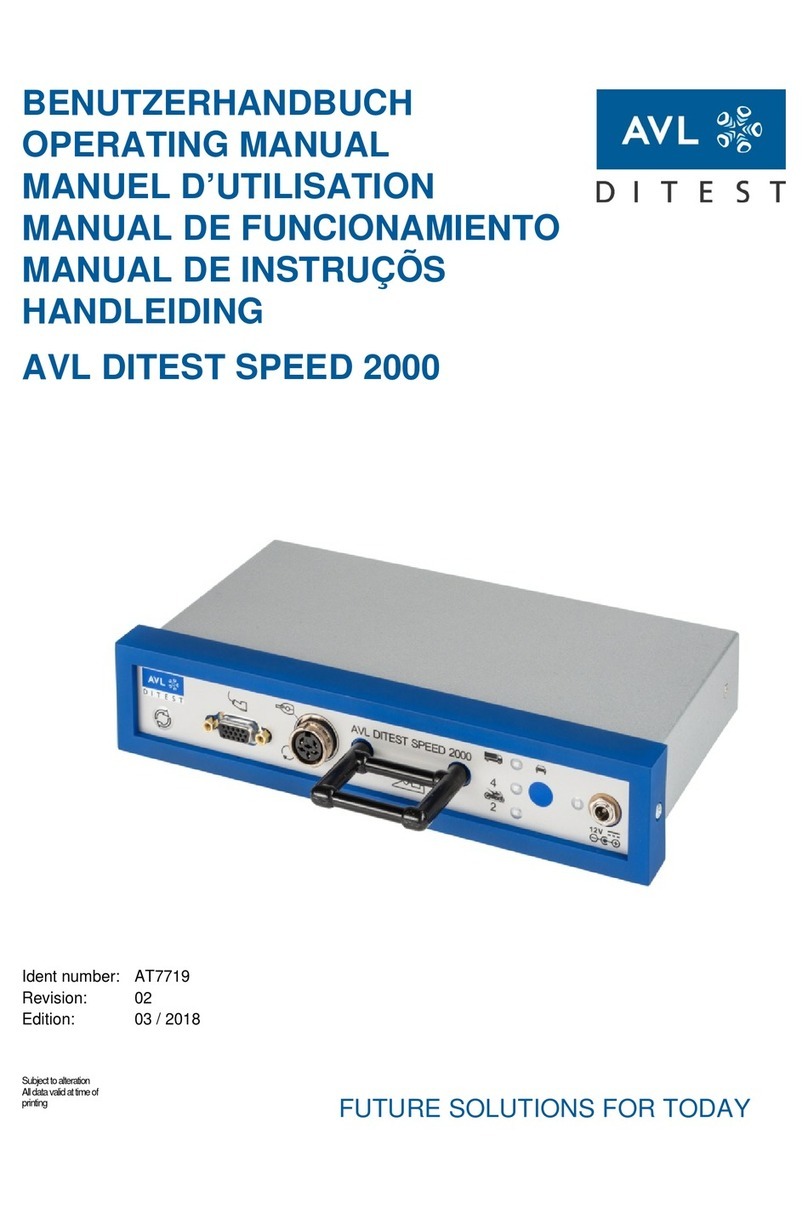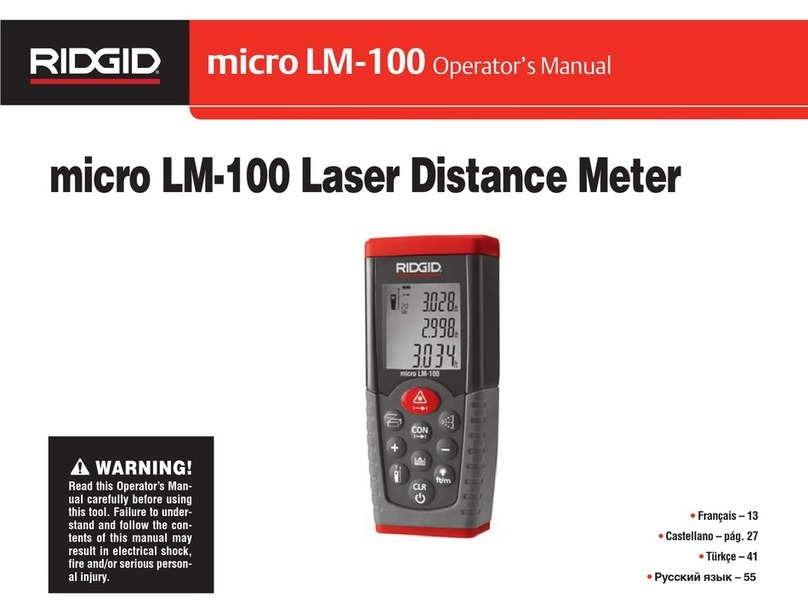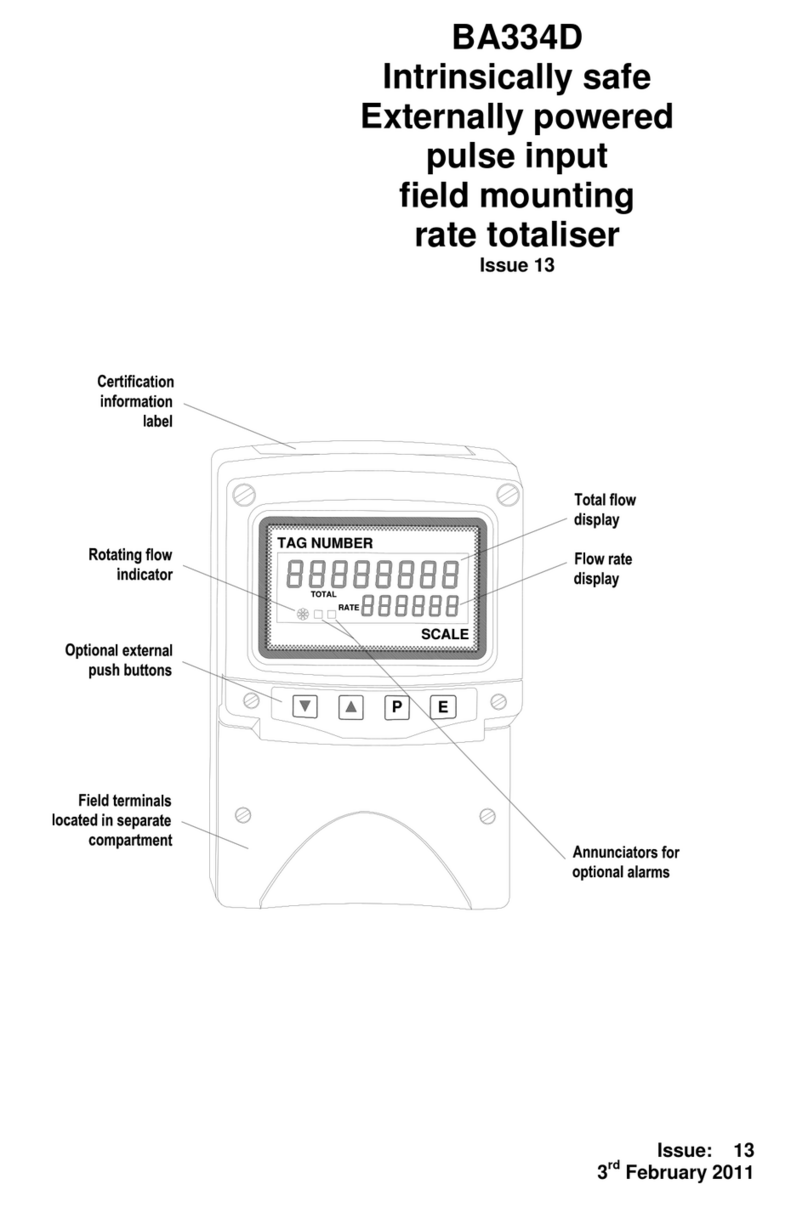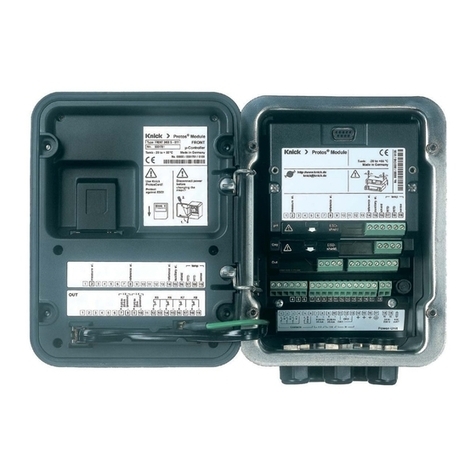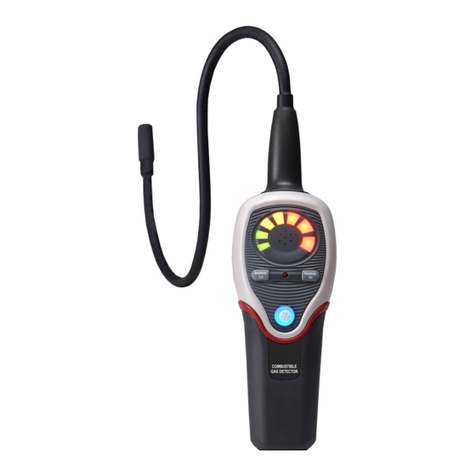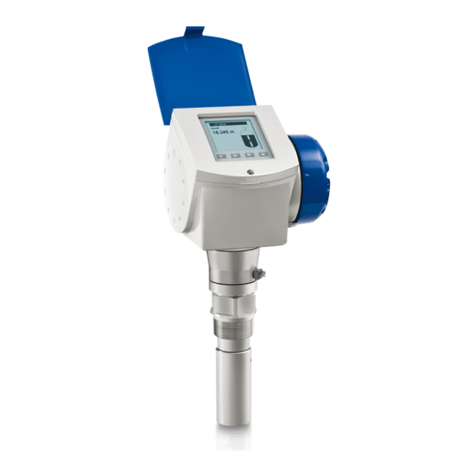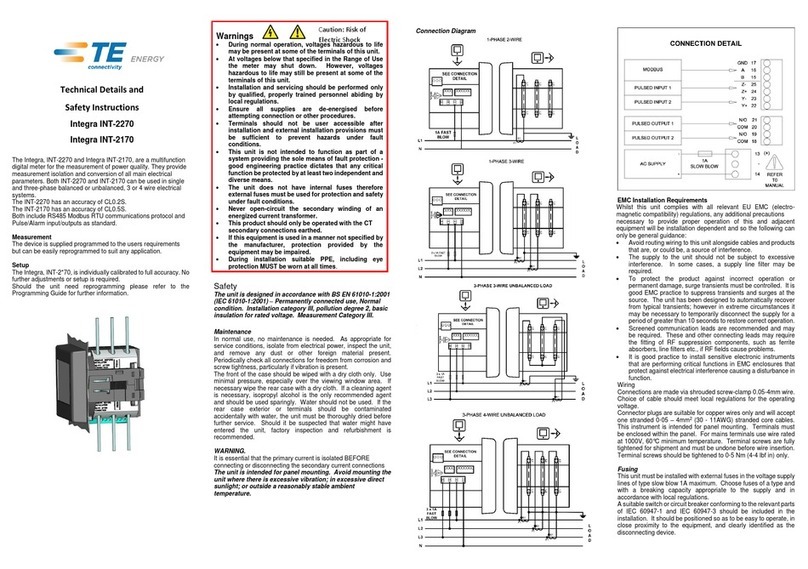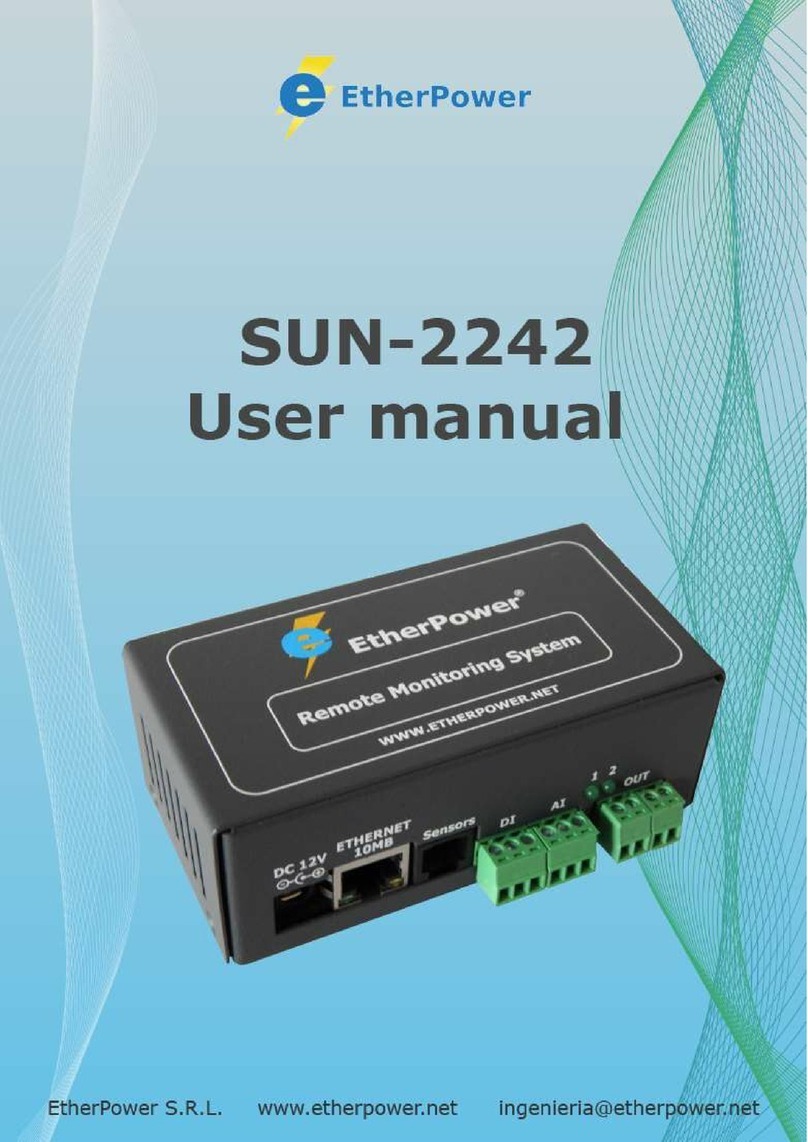iLine microsystems microINR User manual

© 2021 iLine Microsystems. All rights reserved. Made in Spain. This product
is covered by patent technology EP2201365(B1). iLine Microsystems and
microINR are registered trademarks of iLine Microsystems S.L.
INC0001AD - Rev 2021-02
Paseo Mikeletegi, 69
20009 Donostia - Gipuzkoa (SPAIN)
www.ilinemicrosystems.com
iLine Microsystems S.L.
friendly
technology
Instructions for use

No part of these instructions for use or the products it describes may be reproduced by any means or in any form without prior consent in writing
from iLine Microsystems.
The information contained in these instructions for use was correct at the time of printing. However, iLine Microsystems reserves the right
to introduce changes to the specifications, equipment and maintenance procedures of the system at any time, without prior notification. Any
substantial changes will be added to the next revision of these instructions for use.
microINR is a trademark of iLine Microsystems.

01
For monitoring of
Oral Anticoagulation Therapy
with warfarin.
CONTENTS
microINR Meter
INTRODUCTION
INTENDED USE
BEFORE USING THE microINR® SYSTEM
Important information
Important information for healthcare professionals
ORAL ANTICOAGULANT THERAPY
MEASURING PRINCIPLE
microINR® SYSTEM
DESCRIPTION OF THE microINR® KIT
PARTS OF THE microINR® METER
CHARGING THE microINR® METER
SETTING THE TIME AND DATE
QUALITY CONTROL
CONDUCTING THE TEST
PREPARING THE NECESSARY MATERIALS
MEASUREMENT PROCEDURE
Turning the Meter On
Inserting the Chip
Conducting the Test
1.
1.1
1.2
1.3
1.4
2.
2.1
2.2
2.3
2.4
2.5
3.
3.1
3.2
Test Result and Assay End
Turning the Meter Off
COLLECTION AND TESTING THE BLOOD SAMPLE
INTERPRETING THE RESULTS
LIMITATIONS OF USE
MEMORY
CLEANING AND DISINFECTING
Needed Equipment
What to Clean / Disinfect
Warnings when cleaning-disinfecting
ERROR GUIDE
ADDITIONAL INFORMATION
SPECIFICATIONS
WARRANTY
SOFTWARE LICENSES
TECHNICAL SERVICE
SYMBOLS
GLOSSARY OF TERMS
ANNEX I. EMC/ELECTRICAL SAFETY
COMPLIANCE INFORMATION
8
9
9
10
11
11
12
12
12
13
14
16
16
16
16
16
17
18
19
3.3
3.4
3.5
4.
5.
6.
7.
7.1
7.2
7.3
7.4
7.5
7.6
7.7
2
2
2
3
3
4
4
4
5
5
5
6
6
6
6
6
7
7

02
1.1 INTENDED USE
The microINR System measures prothrombin time (PT)
expressed in International Normalized Ratio (INR), for
monitoring oral anticoagulant therapy with warfarin.
The microINR System consists of a microINR Meter and microINR
Chip and uses fresh capillary whole blood from a fingerstick.
The microINR System is intended for patient self-testing use
as well as for healthcare professionals at Point of Care settings.
The microINR System is intended for use in patients 18 years
old or older. Patients must be stable on warfarin medication for
at least 6 weeks before starting to use the microINR System.
For self-testing use: The system is intended for properly
trained users under specific prescription of a physician.
Caution: The microINR System is not intended for use in
patients who are transitioning from heparin treatment to
warfarin therapy. The microINR System is not intended to be
used for screening purposes.
1.2 BEFORE USING THE microINR® SYSTEM
These instructions for use will guide you on the handling and
use of the microINR Meter, please, read them as well as the
instructions for use of the microINR Chip completely.
Additionally, do not forget to read the instructions for use of
the disposable lancets and/or lancing device used to obtain the
capillary blood sample.
Federal law restricts the device to sale by or on the order of a
physician.
Users must receive proper training before starting to use the
microINR System.
Keep these instructions for use near the microINR Meter and
refer to them if you have any questions about proper
operation of the system.
At the end of these instructions you will find a glossary of terms.
Important Information
General Safety Warnings
Throughout these instructions for use you will find safety warnings
and information on the correct use of the microINR System:
This warning symbol indicates a possibility of patient
health damage due to an incorrect INR result leading to
a mistreatment or danger which could result in death,
injury or harm to the patient or user or environmental
damage due to secondary events if the procedures and
instructions for use are not strictly followed.
This precaution symbol indicates the possibility of
deteriorating or damaging the equipment and losing
data, if the procedures and instructions for use are not
strictly followed.
Important information regarding the correct use of the system
that does not affect the safety of the patient, the user or the
integrity of the device is displayed over a blue background.
1. INTRODUCTION

03
Dispose of the Meter
The Meter must be disposed as indicated by applicable local
and federal laws. Bear in mind that:
•Used Meters may have been in contact with blood, so might
be a source of infection.
•The Meter contains lithium batteries.
Important information for Healthcare professionals
The microINR System can be used at physicians’ offices and
anticoagulation clinics, as well as in home settings, whereas it
cannot be used in nursing homes, emergency rooms and
intensive care units.
Infection Risk Control on Multi-Patient Test System
•Healthcare professionals must wear gloves during the entire
process of the test.
•Healthcare professionals must use a new pair of clean
gloves before testing each patient.
•A separate lancet must be used for each patient.
•Used Chips, lancets and gloves might be a source of
infection. Dispose of them in accordance with local
regulations to prevent infections.
•Also, comply with your center’s internal hygiene and safety
regulations.
All parts of the microINR System should be considered
potentially infectious and are capable of transmitting
blood-borne pathogens.
The Meter should be disinfected aer use on each patient.
Please, follow the directions in these instructions for use
for cleaning and disinfection (section 5).
When using the Meter in a multi-patient setting use
only auto-disabling single use lancets.
Electromagnetic Compatibility and Electrical Safety
The microINR System complies with electromagnetic
compatibility (EMC) requirements according to IEC 60601-1-2.
See EMC/Electrical Safety Compliance Information in Annex I.
CLIA categorization
These instructions for use are for self-testing patients and for
healthcare professionals at Point Of Care settings. This is a
CLIA Waived test system. Facilities performing testing must
have a CLIA Certificate of Waiver (or higher). Laboratories with
a certificate of waiver must follow the manufacturer’s
instructions for performing a test. All applicable state and local
laws must be met.
1.3 ORAL ANTICOAGULANT THERAPY
Oral Anticoagulant Therapy (OAT) is given to patients to prevent
thromboembolic events such as venous thrombosis and pulmonary
embolism or those linked to atrial fibrillation or artificial heart valves.
The treatment entails the need to monitor and adjust the
doses periodically for each patient based on a blood test.
Depending on the pathology, a therapeutic range is defined for
each patient, meaning the value of the test should lie within
that range.

of human recombinant thromboplastin traced to the
International Reference Thromboplastin Preparation of the
World Health Organization.
The calibration parameters needed for the INR equation are
encoded in each microINR Chip along with information related
to the expiration date. Therefore, every test is automatically
and individually calibrated reducing any risk of error.
2.1 DESCRIPTION OF THE microINR® KIT
The microINR kit includes:
- Case
- microINR Meter
- Charger
- Instructions for use of the microINR Meter
- Easy guide for self-testing patients
- Error guide
- Questionnaire
microINR Chips are sold separately.
It is recommended to store and carry the Meter
inside its case.
04
If you are a self-testing patient, you need to discuss with your
physician about the best monitoring model for you. Always
refer to your healthcare provider’s instructions as you might
need to communicate your results for dose adjustment.
Prothrombin Time and INR
The activity of oral anticoagulants is monitored by measuring
the Prothrombin Time (PT) in seconds. Depending on the
nature of the reagent and the equipment used, variations of
the PT results are to be expected.
For standardization purposes, the World Health Organization
(WHO) recommended a system in 1977. Prothrombin Time
values are converted into INR values, International Normalized
Ratio, by using a specific equation.
1.4 MEASURING PRINCIPLE
The technology used by the microINR System is based on the
microfluidics of the microINR Chip.
The Chips contain human recombinant thromboplastin as reagent.
The blood sample is applied to the Chip through the entry
channel and mixed with the reagents contained in the
micro-reactors. The coagulation cascade is triggered instantly.
When the blood coagulates, a change in blood flow behavior occurs.
The Meter captures the position of the sample by means of a
Machine Vision System (MVS) and determines the INR result.
Calibration
Each lot of microINR Chips is calibrated against a reference lot
2. microINR® SYSTEM

05
2.2 PARTS OF THE microINR® METER
2.3 CHARGING THE microINR® METER
The Meter uses a lithium battery and is recharged through the
mini USB connection on the top of the Meter.
Charge the battery completely before using the Meter for the first
time. The recommended charging time is approximately 3 hours.
Do not open or manipulate the Meter. The manufacturer
will not warrant Meters that have been opened.
Do not pierce or burn the battery.
Do not change the battery.
Do not store microINR Meter near a heat source since
it could result in battery swelling, leak or malfunction.
For battery replacement or Meter repairs,
the equipment must be sent to the manufacturer.
Battery manipulation could result in a hazard.
Use only the supplied charger provided by the
manufacturer or you may damage the Meter.
Other cables and accessories may negatively affect the
Meter and even can lead to an injury.
2.4 SETTING THE TIME AND DATE
Before using the microINR System, check that the time
and date are correct, as it is necessary for the Chips’
expiration date determination.
Time and date are set during the manufacturing process, so
probably it is not necessary to change them.
Time format: 12 hours, where “A” represents AM and “P”
stands for PM. Date format: MM-DD-YYYY.
Follow the steps described below to change the Meter’s time
and date. Change only the digits needed to be set and confirm
the rest digits:
•Press and hold the left and right buttons (E and M) at the
same time for 10 seconds until the time field flashes.
•Press the left button (E) to set the hour.
•After selecting the correct hour, press the right button (M) and
MINI USB CONNECTION
EXIT (E) BUTTON
MEMORY (M)
BUTTON
CHIP
INSERTION
AREA
DISPLAY

use the left button (E) to set the minutes.
•After selecting the minutes, press the right button (M) again
and the date fields will start flashing.
•Use the left button (E) to select the correct month.
•When you reach the correct month, press the right button (M)
to set the day. Use the left button (E) to select the correct day.
•When you reach the correct day, press the right button (M) to
set the year. Use the left button (E) to select the correct year.
•After setting the time and date, press the right button (M)
again to save your settings.
If the time and date setting is mistakenly initiated or a digit is
unintentionally changed, the Meter will automatically exit that
setting without saving any change aer 10 seconds of inactivity.
2.5 QUALITY CONTROL
The microINR System provides Quality Controls on every test.
First, microINR Meter performance is automatically checked
for electronic components, correct power battery level and
environmental temperature conditions.
Then, On-Board Controls provide a quality control check for
each individual microINR Chip used with the microINR Meter.
microINR System has been designed to detect errors prior to
and during the test in order to prevent inaccurate INR results
through a multi-level strategy.
These quality controls are performed automatically, so there
is no need to run extra quality controls.
06
3.1 GETTING READY FOR THE TEST
Prepare all items needed for the testing:
•microINR Meter.
•microINR Chips (not supplied).
•Disposable lancets and/or lancing device (not supplied).
•Means for skin cleaning (not supplied).
The fingerstick area must be clean, free of contaminants and
completely dry. It is convenient to warm your hands.
See section 3.3 of this instructions for use.
3.2 MEASUREMENT PROCEDURE
Turning the Meter On
The Meter can be turned on:
- By inserting the Chip: - By pressing any button:
3. CONDUCTING THE TEST

07
Do not manipulate the Meter with wet or dirty
hands/gloves.
Inserting the Chip
Verify the expiry date and the storage conditions of
the Chip before conducting the test.
•Open the Chip pouch and remove the Chip
from the package.
Hold the Chip by the yellow part so that the
“microINR” logo can be read correctly. Insert
the Chip into the slot and push it until it stops.
•Make sure the Chip has reached the end.
Do not use the Chip if you detect that the Chip is
defective or its pouch is opened or damaged.
Do not manipulate the Chip with wet or dirty hands/gloves.
Conducting the Test
•The Meter must be placed on a flat and steady surface.
•Once the Chip is inserted, the Meter
automatically turns on. The Chip and the
hourglass symbols appear on the screen
while the Meter performs a quality
control to check the system’s integrity
prior to sample application. A blinking
Chip symbol appears on the screen if no
Chip is inserted or it has not been
inserted all the way until it comes to a full stop.
•While waiting for the device to be ready, make sure your
hand is warm and the fingertip clean (see section 3.3 of
these instructions for use).
•If the quality control is correct, the “Control” symbol will
appear on the screen. If the quality control fails, an error
message will be displayed. In that case, check the “Error
Guide” section of these Meter instructions for use.
•The Chip begins to flash and warms up until it reaches the
appropriate temperature. Once this temperature is reached:
- The device emits an audible signal
(beep tone).
- The drop symbol begins to flash on
the display.
- A count down appears (80s).
- The Chip emits a steady light.
•Once the Meter is ready, perform the
fingerstick (see section 3.3 of these instructions for use).
•Make sure to obtain a spherical and properly sized drop,
equivalent to a teardrop.
•For self-testing patients: Rest the pricked finger on the other
hand leaning on a flat surface to help you during the blood
application.
•Apply the drop of blood on the Chip immediately by putting it
in contact with the Chip’s entry channel, without resting the
finger on the Chip.
•The Meter will emit a beep tone when it detects that the
sample volume is enough, the drop symbol will stop flashing
and the countdown disappears.

08
•After the beep tone, gently remove the finger trying to leave
a small amount of blood at the Chip’s entry channel.
•Wait until the INR result is displayed on the screen.
If you apply the sample and no sound is emitted, this means
that there is not enough sample volume. Remove the Chip and
repeat the test with a new one. Ensure that the size of the drop
is sufficient and do not block the entry channel during application.
Do not reapply sample or try to add more blood to the
channel.
Never perform the fingerstick before the start of the countdown.
Do not touch the Chip’s entry channel with the finger
while inserting the sample.
The Meter must be placed on a flat and steady surface and
do not move the Meter or the Chip until the test is over.
Keep the Meter away from direct sunlight and avoid light
intensity changes during the test.
For healthcare professionals: do not shake or drop the
Meter. If the Meter is dropped or gets wet and the frequency
of error messages increases, contact your local distributor.
For self-testing patients: do not shake or drop the
Meter. If the Meter is dropped or gets wet and the
frequency of error messages increases, contact your
healthcare provider.
Test Result and Assay End
•The measurement
is performed, and
the Meter displays
the result in INR
units or an error
message.
Error messages are displayed as a letter
“E” followed by a number. If an error
message is shown, follow the steps
described in the “Error Guide” section.
•Remove the Chip, holding it from both
sides.
For healthcare professionals:
The used Chips, lancets and gloves might be source of
infection. Dispose of the materials according to your
institution´s infection control policy and the appropriate
local regulations.
For self-testing patients: Dispose of the used Chip with
your regular waste. Dispose of used lancets carefully.
Use a sharps container to prevent injury to yourself or to
others with the needle. Contact your healthcare provider
to help you get a sharps container.

creams, etc.), lotions or sweat on the fingerstick area
or the blood sample may cause incorrect results.
Before lancing the finger, it is convenient to warm
hands. There are several techniques that can be
used for that pupose as keeping hands below the
waist and massaging the fingertip soly.
•You can use any finger for the fingerstick.
The recommended site is the
one shown on the following
image.
•Once the Meter is ready for
testing and the 80-second
countdown appears on the screen,
place the lancet firmly against the
fingertip and activate it. Massage the
finger to bring blood to the finger tip
and gently press to help form a drop of
blood. Do not press the fingerstick site or let the drop of
blood spread on the finger.
•Before placing the sample on the Chip, make sure to obtain
a spherical and properly sized drop (equivalent to a
teardrop), large enough to leave a small amount of blood
(remnant) at the entry channel.
Sampling technique can affect the result of the test.
Do not squeeze or “milk” the fingerstick area as this
can alter the coagulation process. Do not let the drop
of blood spread on the finger.
09
Turning the Meter Off
There are two ways to turn the Meter off:
•The Meter turns off automatically after
3 minutes of inactivity.
•Press the left button (EXIT) to turn the
Meter off, holding it for 3 or 4 seconds.
The Meter cannot be turned off while
connected to the power supply.
3.3 COLLECTION AND TESTING
THE BLOOD SAMPLE
The steps to obtain and apply a capillary blood sample
correctly are detailed below:
•Read the instructions for use of the fingerstick device or lancet.
The fingerstick site must be clean, completely dry
and free of contaminants. Washing the hands with
warm soapy water is recommended. You may also
use alcohol to clean the
fingerstick area. Always
dry the area thoroughly
to remove any traces of
substances that might
interfere with the result.
Always use a new, clean
and dry gauze.
Any alcohol
(disinfectants, shaving

When using the Meter in a multi-patient site uses only
auto-disabling single use lancets.
•For self-testing patients: Rest the pricked finger on the other
hand leaning on a flat surface to help you during the blood
application.
•Apply the drop to the Chip immediately, in contact with the
entry channel.
Samples must be applied immediately aer collection,
since blood clotting does naturally occur upon fingerstick.
Avoid contact between the Chip and the finger in order
not to obstruct the entry channel and to allow for
uninterrupted blood absorption. Only the drop of blood
must make contact with the Chip.
Apply the sample on a single attempt. Never add more
blood to the Chip.
10
•After the beep tone, gently
remove the finger, leaving a
small amount of blood
(remnant) at the entry channel
as shown in the picture.
•If you need to repeat the test,
you must perform the fingerstick
in a different finger with a new
lancet and a new Chip.
3.4 INTERPRETING THE RESULTS
The results are shown as International Normalized Ratio (INR)
units. The microINR System’s results range between 0.8 and 4.5.
If you obtain a
result out of the
measuring range,
the display
shows ↓ 0.8
(below 0.8) or
↑ 4.5 (above 4.5).
If an error message is displayed, see the “Error guide” section
and follow the instructions.
Some liver diseases, thyroid dysfunction and other diseases or
conditions as well as nutritional supplements or changes in dietary
habits, can affect the activity of warfarin and the INR results.

The microINR Meter can store up to 199 results. Each result is
stored with the date and time of the test. When conducting a
test, if there is no free storage space, the oldest result will be
automatically deleted to store the new one.
To check the results:
•Press the right button (M). The result of the last test
conducted will be displayed with its date and time.
•Press again to display the next result, corresponding to the
second-to-last test and so on.
•Press the left button (E) to return to the initial screen. If you
insert a Chip while you are checking the memory, a new test
will begin normally.
11
For healthcare professionals: If an unexpected result is
obtained, repeat the test making sure that the directions in
these instructions for use are strictly followed. If an
unexpected result is obtained again, the result must be
checked using another method.
Results are unexpected when they do not match the
patient´s symptoms (i.e., hemorrhages, bruises, etc.).
For self-testing patients: If an INR result is obtained
outside the specific therapeutic range defined by your
physician, contact your healthcare provider and follow their
instructions.
3.5 LIMITATIONS OF USE
For information regarding limitations of the microINR System
refer to the instructions for use of the microINR Chips.
4. MEMORY

For healthcare professionals:
Always use applicable Personal Protective Equipment.
Always follow the infection control procedures of
your institution when handling portable coagulation
equipment.
Always wear a new pair of gloves while cleaning and
disinfecting the Meter.
What to Clean / Disinfect:
The following parts of the Meter and system components may
be cleaned and disinfected:
•The area around the Chip insertion zone
•The Meter screen
•The Meter housing (entire Meter surface)
Cleaning process
1. Turn the Meter off and make sure the cable is unplugged.
2. Take a Super
Sani-Cloth® wipe
and clean the
microINR Meter
(all areas) for
10 seconds and
dispose the wipe.
Disinfection process
1. The disinfection routine must be performed for 2 minutes
(contact time).
12
Cleaning and disinfecting the Meter is essential to prevent
blood-borne transmission of pathogens.
Disinfection of the Meter destroys most, but not all, pathogenic
and other types of microorganisms.
For healthcare professionals: The FDA recommends that
Point-Of-Care testing devices used with multiple patients be
properly cleaned and disinfected aer every use.
Clean the Meter to remove visible dirt before disinfecting.
For self-testing patients: Clean and disinfect the Meter and/
or the lancing device when there is visible dirt or when there is
blood on it. Also, clean and disinfect the Meter and/or the
lancing device before anyone else handles them.
Needed Equipment:
All these materials can easily be found and purchased on
internet.
•Super Sani-Cloth® Germicidal Disposable Wipes
(EPA reg. no. 9480-4)
•Lint-free cloth
•Lint-free microbrush 0.059 in (1.5mm) tip
Additional equipment for Healthcare Professionals:
•Gloves
5. CLEANING AND DISINFECTING

Warnings and precaution tips when
cleaning-disinfecting
•Do not clean or disinfect the Meter while conducting a test.
Always use Super Sani-Cloth® Germicidal Disposable Wipes
(EPA* reg. no. 9480-4) to clean and disinfect the Meter.
•Do not use any other cleaning or disinfecting solution. Using
solutions other than that mentioned above could result in
damage to system components.
•Verify that the gauze or wipe is just moist, not soaked. Make
sure that no liquid enters the Meter or the Chip insertion
area or USB port.
•Do not let liquid accumulate near any opening.
•Do not spray fluids on the Meter or submerge the Meter.
•The Chip insertion area must always be clean and dry before
conducting a test as remains of liquid can contaminate the
sample.
•Do not handle the Chips with liquid-contaminated hands or
gloves.
•Comply with all recommendations regarding cleaning and
disinfection of the Meter. Not doing so could cause incorrect
results.
•If you notice any signs of deterioration of the Meter after
cleaning or disinfecting, stop using the system and contact
your distributor or healthcare provider.
13
2. Take a new Super Sani-Cloth®
wipe and start wiping the
back and front surfaces and
continue with the laterals.
3. Wipe the critical parts of the
Meter gently (USB port,
microINR Chip insertion area, buttons,
and display area) making sure no
liquid enters or accumulates near
these critical areas.
4. Allow the microINR Meter to air dry
thoroughly for 10 minutes before
using it.
5. Wipe the Meter using a drying
lint-free cloth to remove any liquid
that might remain on the Meter.
6. Use a swab to remove any lint that
might remain at the Chip insertion
area by introducing the swab in the
entry and sliding it to both sides.
Introduce the swap properly to avoid
any Meter internal component
damage.
For healthcare professionals: Remove the used gloves.
For self-testing patients If using a lancing device, always
follow its instruction for use to clean and disinfection.

The Datamatrix could not be read or
used Chip detected.
Expired Chip.
The 80-second countdown for sample
application has been exceeded.
Sample has not been correctly detected.
Chip inserted upside-down.
Wrong application of the blood sample.
E01
E02
E03
E04
E05
Ensure the Chip has not been previously used or is not damaged. Insert the same Chip again,
ensuring correct insertion. If the problem persists, repeat the test with a new Chip. If, despite this,
the problem is still not solved, the Meter may be damaged.
Verify the date of the Meter. If the date is not correct, enter the current date (see section 2.4) and
insert the same Chip again. If the date is correct, repeat the test with a new lot of Chips.
Always verify the Chip expiry date.
If the sample has not been applied yet, repeat the test with the same Chip.
If the sample has been applied, repeat the test with a new Chip.
Make sure to apply enough sample volume.
Rotate the Chip and repeat the test. See picture at section 3.2.
Repeat the test with a new Chip.
Make sure you do not block the Chip’s entry channel and you are applying a sufficient amount of
blood. Gently remove the finger aer the blood application. Go to section 3.3 of the microINR
Meter instructions. Verify proper Chip storage conditions (see microINR Chip instructions).
Failure while checking the electronic
components of the Meter.
Temperature below the defined range.
Low battery.
Inadequate coagulation of the sample
during the test. Irregularities during the test.
Possible Chip degradation (not correctly
stored) or sample contamination.
E06
E07
E08
E09
E10
Turn the Meter off and switch it on again.
If the problem persists, the device may be damaged.
Verify that the temperature is above 59ºF (15ºC). Repeat the test in a warmer location.
If the problem persists, the device may be damaged.
Charge the device with the charger supplied by the manufacturer.
Repeat the test with a new Chip.
Strictly follow instructions on obtaining and applying the sample (see section 3.2 and 3.3) and
verify proper Chip storage conditions (see microINR Chips instructions).
Repeat the test with a new Chip.
Strictly follow instructions on obtaining and applying the sample (see section 3.2 and 3.3).
Review the Storage and Stability, Limitations and Interference Sections at microINR Chips instructions.
Incorrectly inserted Chip.
Chip used or damaged.
Meter damaged.
Temperature above the defined range.
Wrong Chip reference.
Error while processing the sample during the
test. Possible Chip degradation (not correctly
stored) or Chip damaged. The device has
been hit or moved abrutly during the test.
E11
E12
E13
E14/15
Strictly follow instructions on inserting the Chip into the Meter (see section 3.2).
Insert the same Chip again, ensuring its correct and complete insertion. If the problem persists, repeat
the test with a new Chip. If, despite this, the problem is still not solved, the Meter may be damaged.
Verify that the temperature is below 104ºF (40ºC). Repeat the test in a cooler location.
If the problem persists, the Meter may be damaged.
Make sure your Chip reference begins with CHC.
Repeat the test with a new Chip.
Verify proper Chip storage conditions (see microINR Chips instructions).
Do not hit/touch or move the Chip or Meter during the test.
14
Error code Probable Cause Possible Solution
6. ERROR GUIDE

15
Error code Probable Cause Possible Solution
Inadequate coagulation of the sample
during the test. Contaminated sample or
sample with abnormally high INR values.
Error while processing the sample during
the test.
The device has been hit or moved abruptly
during the test.
Chip damaged.
Wrong application of the blood sample or
unusual/abnormal sample.
E16
E17
E18
Repeat the test with a new Chip. Strictly follow instructions on obtaining and applying the sample
(see section 3.2 and 3.3). Review the Storage and Stability, Limitations and Interference Sections
at microINR Chips instructions.
Repeat the test with a new Chip.
Strictly follow instructions on obtaining and applying the sample (see section 3.2 and 3.3).
Do not hit/touch or move the Chip or Meter during the test.
Verify proper Chip storage conditions (see microINR Chips instructions).
Repeat the test with a new Chip. Strictly follow instructions on obtaining and applying the sample
(see section 3.2 and 3.3). Make sure to apply enough sample volume in a single attempt. If error
E18 is displayed again, contact your healthcare provider (your hematocrit value defined for the
microINR System may be out of range).
For healthcare professionals: If a problem persists aer
performing the actions stated in the Error Guide section or if
you require additional information, you can contact your local
distributor.
For self-testing patients: If a problem persists aer
performing the actions stated in the Error Guide section or if
you require additional information, you can contact your
healthcare provider.

7.1 SPECIFICATIONS
•Dimensions of the Meter: 4.68x2.55x1.37 in (119x65x35
mm).
•Weight: 7.51±0.10 oz or 213±3 g. (battery included).
•Screen: LCD 1.77x1.77 in (45x45 mm).
•Memory: 199 results / error messages with their date and time.
•Power supply:
- Battery: Lithium 2400mAh/2800mAh; 3.7V. Consumption: 1 A
- Power supply: Only use the charger provided with microINR
Meter. Model Number GTM96060-0606-1.0.
•Number of tests per charge cycle: *approximately 70 tests.
•Operation conditions:
- Temperature: 59 ˚F to 95 ˚F (15ºC to 35ºC).
- Maximum relative humidity: 80%.
•Meter storage temperature: -4 ˚F to 122 ˚F (-20ºC to 50ºC).
•Measurement range: 0.8 –4.5 INR.
•Sample volume: minimum 3µL.
*Test conducted at 72 ˚F (22ºC) with a 10-minute period between tests.
16
7. ADDITIONAL INFORMATION 7.2 WARRANTY
iLine Microsystems warranties to the original buyer that the
microINR System is free of material and manufacture defects
for one year aer the purchase date.
This warranty does not cover any component damaged due to
inadequate storage in environmental conditions outside the
defined range, accidents or modifications, incorrect use or
handling and misuse. The buyer must deliver a written
warranty complaint to the manufacturer within the
corresponding warranty period.
7.3 SOFTWARE LICENSES
This product incorporates soware modules developed under
open source licenses.
The license conditions are available (in English only for legal
reasons) as a text file (file name “SWL0001EN”) under request
at the iLine Microsystems information email:
(inf[email protected])
Everyone is permitted to copy and distribute verbatim copies
of this license document, but changing it is not allowed.
7.4 TECHNICAL SERVICE
For healthcare professionals: If you need technical help,
contact your local distributor.
For self-testing patients: if you have any question, please
contact your healthcare provider.

17
TEST RESULTS IN INR
UNITS OR ERROR CODE.
TIME
HOURS : MINUTES.
A: AM
P: PM
THE RESULT IS
ABOVE OR BELOW
THE MEASURING
RANGE OF THE
SYSTEM ↓0.8 ↑4.5.
DATE
MONTH : DAY : YEAR
BLINKING
INDICATES “APPLY
SAMPLE”.
THE RESULTS OF
THE BLOOD TEST
ARE DISPLAYED
IN INR FORMAT.
INSTRUCTS THE USER
TO WAIT UNTIL THE
METER COMPLETES A
CERTAIN ACTION.
THE CODE
DISPLAYED IS AN
ERROR CODE.
THE PREANALYTICAL
CONTROLS HAVE BEEN
COMPLETED
SUCCESSFULLY.
AMOUNT OF
REMAINING BATTERY
POWER.
THE STORED
RESULTS ARE BEING
DISPLAYED.
BLINKING
INDICATES
“INSERT CHIP”.
7.5 SYMBOLS
“Manufacturer”
”Catalogue number”
“Serial number”
“Temperature limit”
“Consult the instructions for use”
”Direct current”
“Batch code / Lot Number”
“Type BF Applied Part”
“Class II Equipment”
“Degree of Ingress Protection Provided by
Enclosure. Protected against solid foreign
objects of 12.5 mm Ø and greater.
Protection against vertically falling water
drops when ENCLOSURE tilted up to 15’’
“Caution (consult accompanying documents).
Refer to safety-related notes in the
manual accompanying this instrument’’.
“Biological hazard”
“Medical - General medical equipment as
to electrical shock, fire and mechanical
hazards only in accordance with “ANSI/
AAMI ES60601-1 (2005) + AMD 1 (2012)”
and “CAN/CSA-C22.2 No. 60601-1:14”
Control number E473708”.
“In-vitro diagnostic medical device”
“Prescription Use Only” “Warning”
Symbols included in this instructions for use:
“Precaution”

18
7.6 GLOSSARY OF TERMS
Capillary blood: Blood obtained from capillary beds that
consist of the smallest veins (venules) and arteries (arterioles)
of the circulatory system. Capillary blood is usually obtained
by puncturing a fingertip.
Capillary fingerstick: Small puncture on a finger to obtain
capillary blood.
Chip: Disposable element insertable into the microINR Meter,
like a test strip. It serves to receive the capillary blood sample
for the INR test.
Entry channel: Slot on the bottom of the microINR Chip that
receives the blood.
International Normalized Ratio (INR): Standardized
prothrombin time measurement that accounts for the different
sensitivities of the thromboplastins used in different systems.
The INR results from different prothrombin time measurement
systems can be compared to each other but may not be identical.
Lancet: Piercing tool used to make a small cut or puncture to
collect a small drop of blood.
Machine Vision System (MVS): Set of Hardware and
Soware technology that enables a computing device to
inspect, evaluate and identify still or moving images.
A machine vision system typically consists of digital cameras
and back-end image processing hardware and soware.
Microfluidics: Microfluidics is the science and technology of
systems that process or manipulate small amounts of fluids,
using channels measuring from tens to hundreds of micrometers.
Meter: Electronic device that serves to conduct INR
measurements.
Micro-reactor: Area of the microINR Chip meant to store the
reagents.
Mini-USB connector: Miniaturized version of the Universal
serial bus (USB) interface for the charger connection.
Oral Anticoagulant Therapy (OAT): Orally administered
treatment that inhibits or interferes with the coagulation of
the blood to reduce the risk of thrombosis (clotting).
Prothrombin time (PT): Coagulation test in which
coagulation is induced by exposing a blood sample to a
thromboplastin reagent material.
Quality control: Procedures intended to assure that the
device is performing within specifications, and therefore the
results are suitable for their intended diagnostic use
preventing inaccurate results.
Reagent: Substance used to cause a chemical reaction in
order to measure a substance or process (such as the PT test).
Remnant: Small amount of excess blood that remains on the
entry channel of the microINR Chip.
Therapeutic range: Range of drug level in the blood of a
patient in which a drug has the desired effect upon the body.
Thromboplastin: Reagent used in the PT assay.
Other manuals for microINR
3
Table of contents
Other iLine microsystems Measuring Instrument manuals
